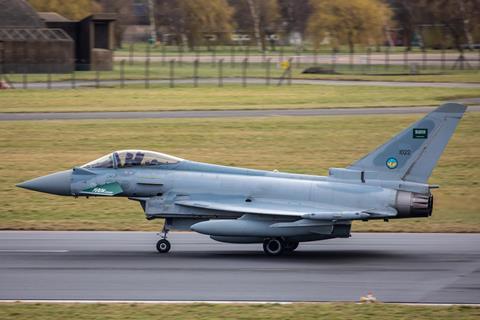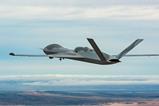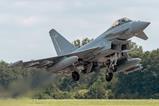The three-nation Global Combat Air Programme (GCAP) continues to make solid progress, with Italy, Japan and the UK making considerable strides towards agreeing its industrial construct, a senior BAE Systems official says.
Formally launched in late 2022, GCAP aims to meet the Future Combat Air System (FCAS) requirements of its partner nations, via the development of a manned sixth-generation fighter and supporting elements. Its lead industrial partners are airframers BAE, Leonardo and Mitsubishi Heavy Industries.

“From an industrial point of view, we are about 70% through negotiations in defining the workshare, work allocation and the work location,” says Herman Claesen, managing director FCAS at BAE Systems Air. “We are converging on the same delivery construct – the same view on how we set ourselves up for the future,” he adds.
“We are looking at setting up a single entity that is authorised to act on behalf of the three companies,” he said during a UK parliament Defence Committee hearing in London on 24 January. “We’re doing that through a governance construct, so in effect it becomes almost a company.”
To be headquartered in the UK, its first leader will be drawn from Italian industry.
LESSONS LEARNED
“We are learning from the past,” says Claesen, who previously served as chief executive of Europe’s four-nation Eurofighter industrial consortium for three years until December 2021. “For example, we are looking at providing this new construct with the engineering authority it needs, which was one of the weaknesses in the [Eurofighter] Typhoon model.”
He describes this as a significant evolution from the Eurofighter construct, “where the accountability was more diluted”.
“We have excellent momentum, and as we speak, my team are negotiating with Japan and Italy to make sure that we complete this activity in the first half of this year,” Claesen says.
Last December, the partner nations’ defence ministers also pledged to establish a GCAP International Government Organisation to manage the trilateral effort. To be established in the UK, its first chief executive will be a Japanese official.
The GCAP activity is expected to deliver an operational capability for service entry in 2035, with the new manned fighter to begin replacing the UK Royal Air Force’s multi-role Typhoons.
Noting that GCAP is “international by design”, Claesen says the door remains open for other nations to participate in the future.
“There is always room to consider international partners – that can be later down the line at a different level” than the manned core platform, he says. “That gives you the opportunity with other nations to develop these other elements.”

Meanwhile, UK-only work on building a sixth-generation demonstrator in support of the GCAP effort continues. “The software has already been written and tested to a very high standard of maturity, while the aircraft is still in build,” Claesen notes.
The GCAP project is currently in its concept and assessment phase, with a so-called outline business case 2 proposal to be presented by industry late this year, before the next major funding commitment in 2025.
“We are getting ready to start design and development of the solution from next year,” Claesen says. “If you break that momentum – if you are stopping and starting – we will have resourcing challenges.” Any delay also would result in “building more risk”, he cautions.
The partner nations are defining their multi-year funding plans, with “good momentum being made”, he says.
Stressing that GCAP will deliver a spectrum of capabilities, Claesen notes the importance of unmanned platforms within its future mix.
“We are investing heavily at the moment in the development of unmanned systems – we are actually looking at building a demonstrator to make sure that we as BAE Systems stay at the forefront of the space, and continue to work very closely with the Royal Air Force and the MoD [Ministry of Defence] to shape what that final solution looks like.”
TYPHOON BOOST
Separately, the UK continues to pursue a potential follow-on Typhoon deal with Saudi Arabia, after the German government recently signalled that it would remove its long-held opposition to a sale.
“We welcome the public news around Germany’s changing stance,” Simon Barnes, managing director, BAE Systems Air told the Defence Committee. “I think that benefits the Eurofighter consortium. The steps that take us towards further exports of Typhoon is very welcome. We see it as a really positive step forward.”
“We are supporting the UK government to respond to the statement of requirements issued by the Saudi Arabian government for a future requirement of Typhoon aircraft,” BAE says.

Riyadh has previously expressed interest in acquiring 48 new Typhoons, to boost its already-operational fleet of 72 examples acquired via a government-to-government deal with the UK.































